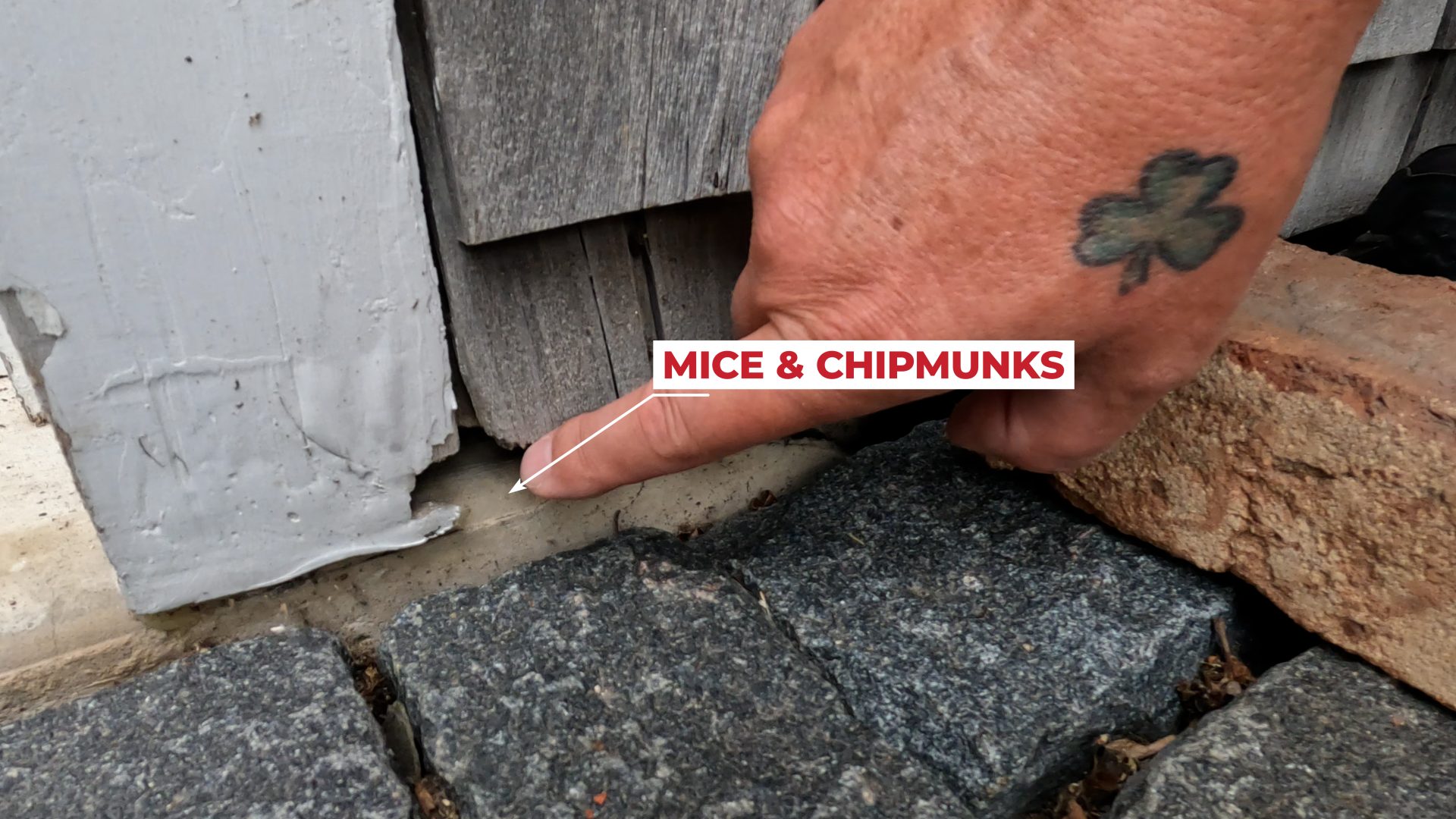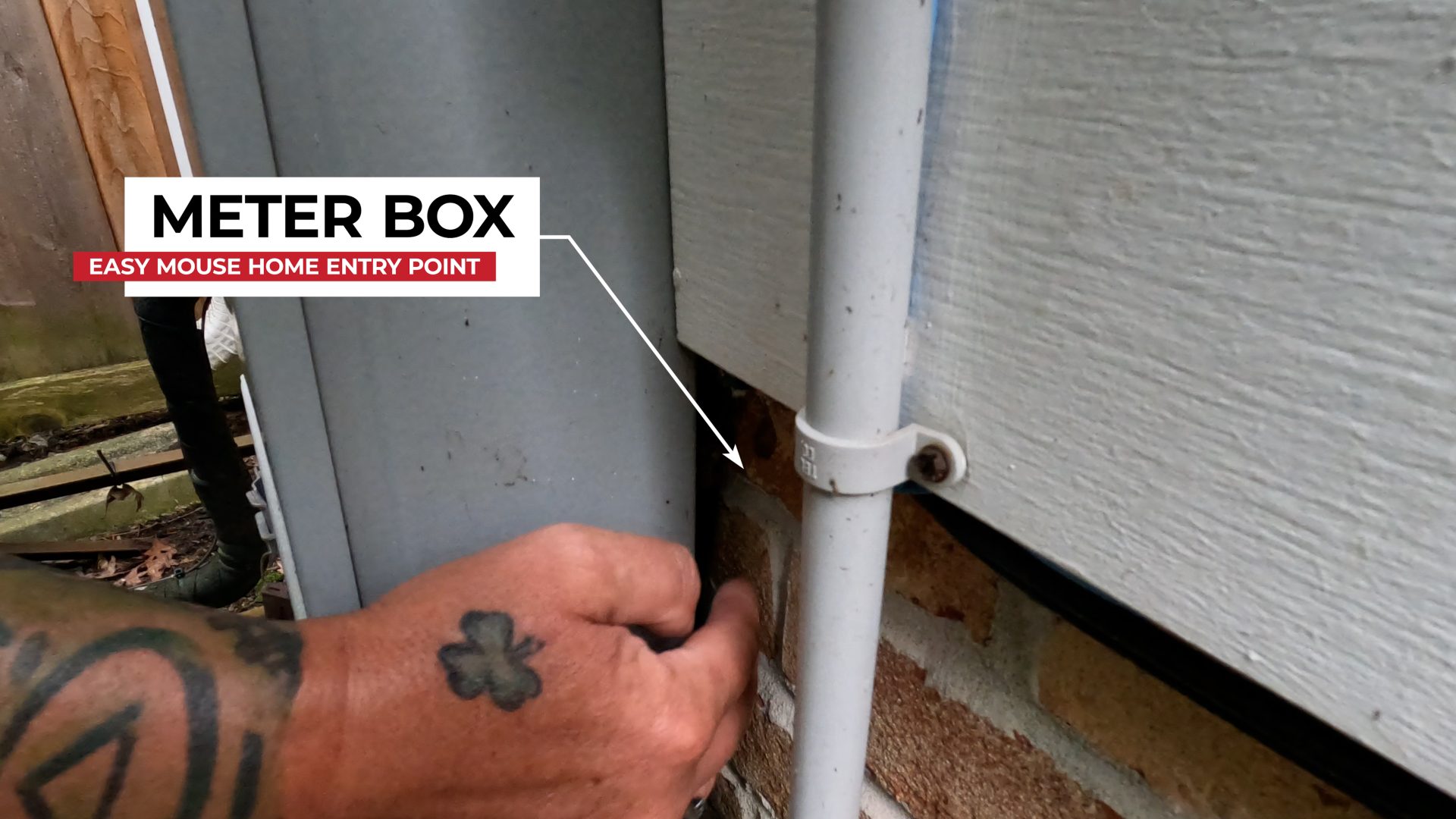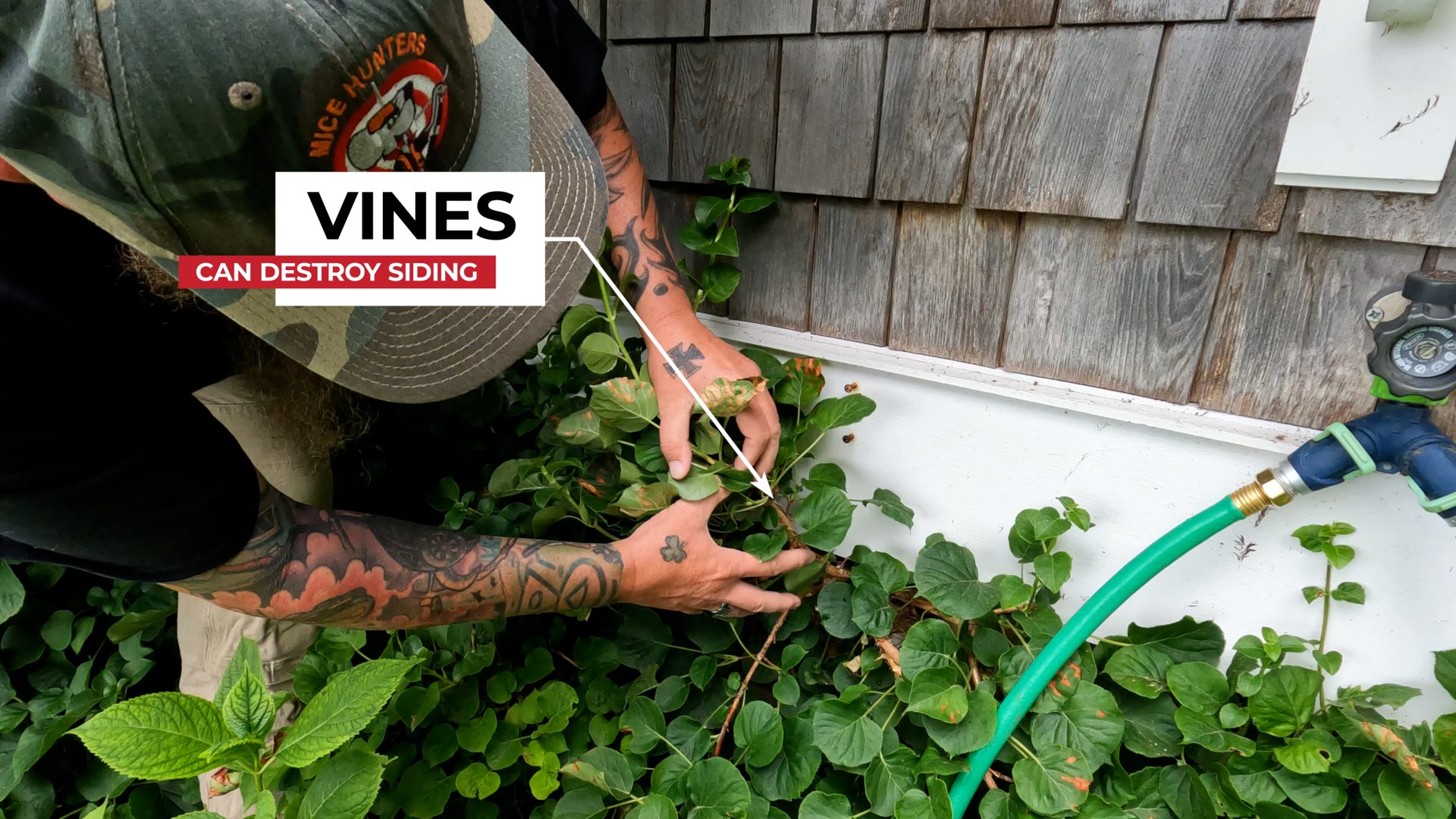https://www.youtube.com/watch?v=7QVZkcdt6NA
If you have issues with mice in your home, know that you are not alone in having this problem, as reported by the Census Bureau, nearly 1/3 of all households have reported rodents in their homes. We will explain what evidence we look for when inspecting a home for a mouse infestation and how to keep mice out of your home by addressing the problem areas and providing remedies.
The mouse infestation in this home has been uncovered by Jason McKinley from Mice Hunters, who found evidence of mice in both the kitchen and the basement. Mice Hunters has been referred to conduct the work of mouse proofing and exterior sealing by another company that has already completed phase one of the mouse proofing, which includes the use of poison baits.
Mice Infestations Result From Home Structural Problems
First and foremost, before we go into our home inspection, you should know why we are simply not recommending you go get some peppermint oil or a cat to deter mice from getting into your home. Those are deterrents, not solutions. They do not work! Don’t be fooled! You don’t have to take our word for it, so we’ve gathered data from the Census Bureau on why homes have rodents. Here’s what they have to say on this subject.
Residents of owner-occupied units and homes with structural problems were more likely to report seeing a rodent in the last 12 months (Figure 2). For example, homes with outside walls that slope, lean, or buckle were about 5.6 times more likely than those without these structural wall problems to have rodent sightings.
When Mice Hunters inspects homes where there’s a mouse infestation, we are not looking for each individual hole and simply putting a strategy to fill individual holes. Mice Hunters develops a complete mouse-proofing solution that addresses structural concerns of the home that the Census Bureau has indicated are top reasons that people have a rodent infestation to begin with. This is where a mouse-proofing service differs from a mouse or pest extermination company. Extermination companies plug holes and lay baits. Mice Hunters actually address the underlying problems with structural faults of the home.
Mouse Proofing Inspection: What Professionals Look For on a Home
The shingle siding that goes all the way around the home presents a challenge regarding mouse-proofing since it makes it difficult to maintain the sealant where it is required. This is one of the primary challenges. To solve this issue, a mesh material made of 1/4-inch wire mesh can be used, as demonstrated by Jason, to block the access sites where the mice can get in. This will prevent them from doing so.
In addition to this, it is vital to clean out and then seal any weep holes that may be present in the brickwork. The weep holes in the brick are intended to allow moisture to escape through the back of the brick, but they also need to be cleaned and sealed to prevent rodents from entering. Jason says that there are a lot of weep holes, which makes the process of sealing them a substantial one because there are so many of them.
Check Under Decks for Mice Entry Points Along the Foundation
Dealing with the porches of the house is another matter that needs to be resolved as soon as possible. These porches have a tongue-and-groove decking material installed over the top of the face. Mice Hunters are required to either go through the lattice or, in this case, go underneath the lattice and deck in order to successfully seal the foundation to siding against mice. Due to the fact that the lattice has been well made and does not move, this work is challenging because it needs excavating underneath it in order to get to the house and seal the siding.
While Jason was going around the house, he came across an entry point where rodents like mice and chipmunks have been getting in. He took out a brick to illustrate the access point and found that there is another spot that has to be sealed off.
Inspect Utilities For Mice Entry Points
As he points out, the house’s utilities, such as the air conditioning unit, are also potential entry points for mice.
Mice Love Vegetation | Move Them Away From Your Foundation
Mice are able to find their way into any home, regardless of the home’s age, condition, or value. They can enter via openings no larger than the tip of your ring finger, which is why it is necessary to deal with potential access points. The fact that the ivy is growing up the side of the house can also make it simpler for the animals to move around and enter the home.
It is critical to mouse-proof your home in order to stop mice from entering your home. A substantial portion of the process involves addressing the entry sites, which may include the shingle siding, weep holes, under porches and foundation among other potential entry points. In addition to that, it is essential to take care of the utilities and the growth of ivy. Mice can enter any home, but if you take the precautions that have been outlined here, you can stop them from making your home their permanent residence.
What’s Next After Inspecting My Home For Mouse Entry Points?
At Mice Hunters, our process secures your home against current and future mouse entry by sealing every single potential entry point by addressing weaknesses in the home’s structural faults. We know that there has never been a homeowner we know of that has done this the way we would, so our best advice is to find a mouse-proofing professional near you. If that is not available, the next best thing is to seal the most obvious entry points and learn how to recognize them through this video! As always, leave questions and comments below!






Recent Comments